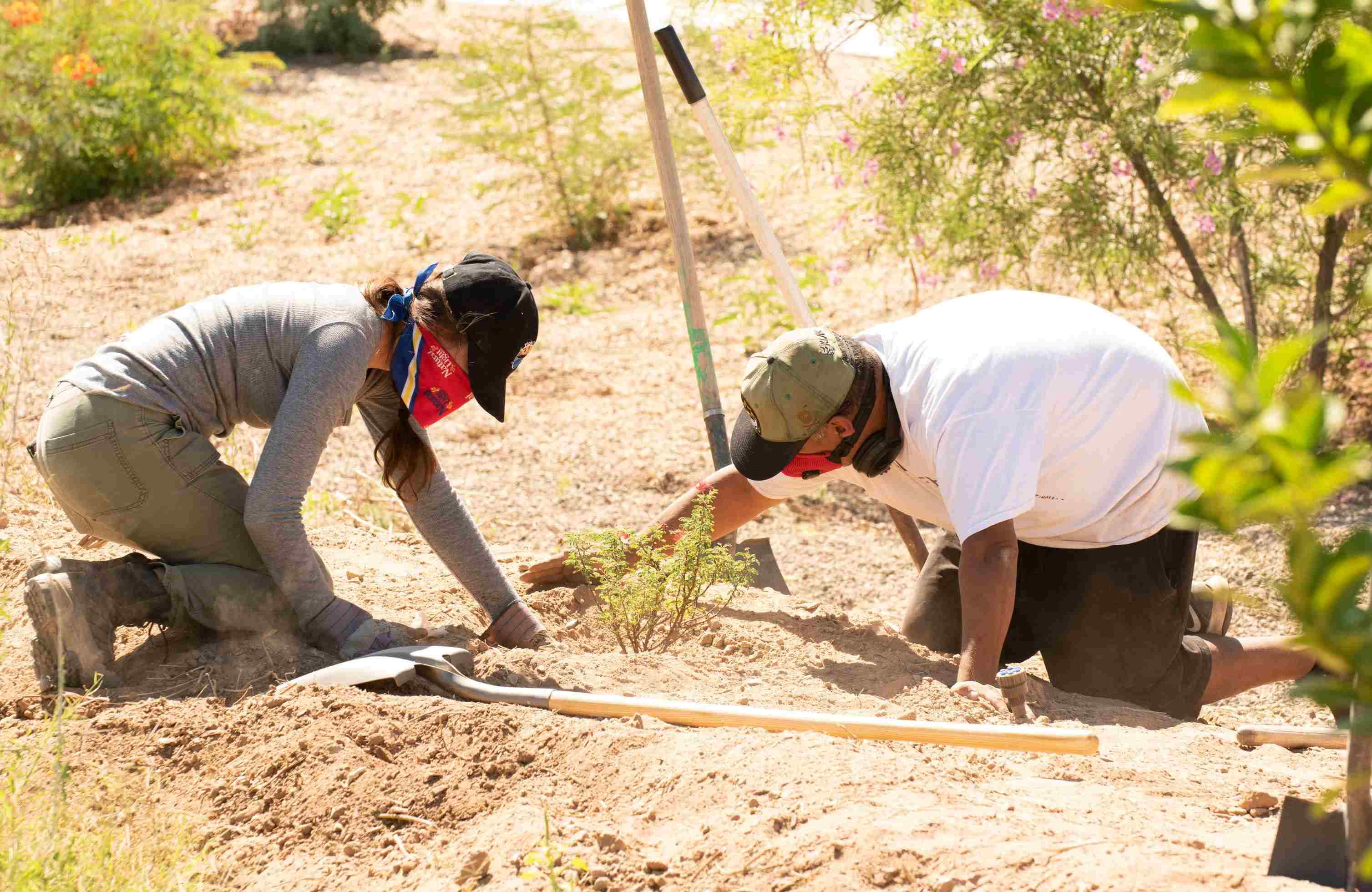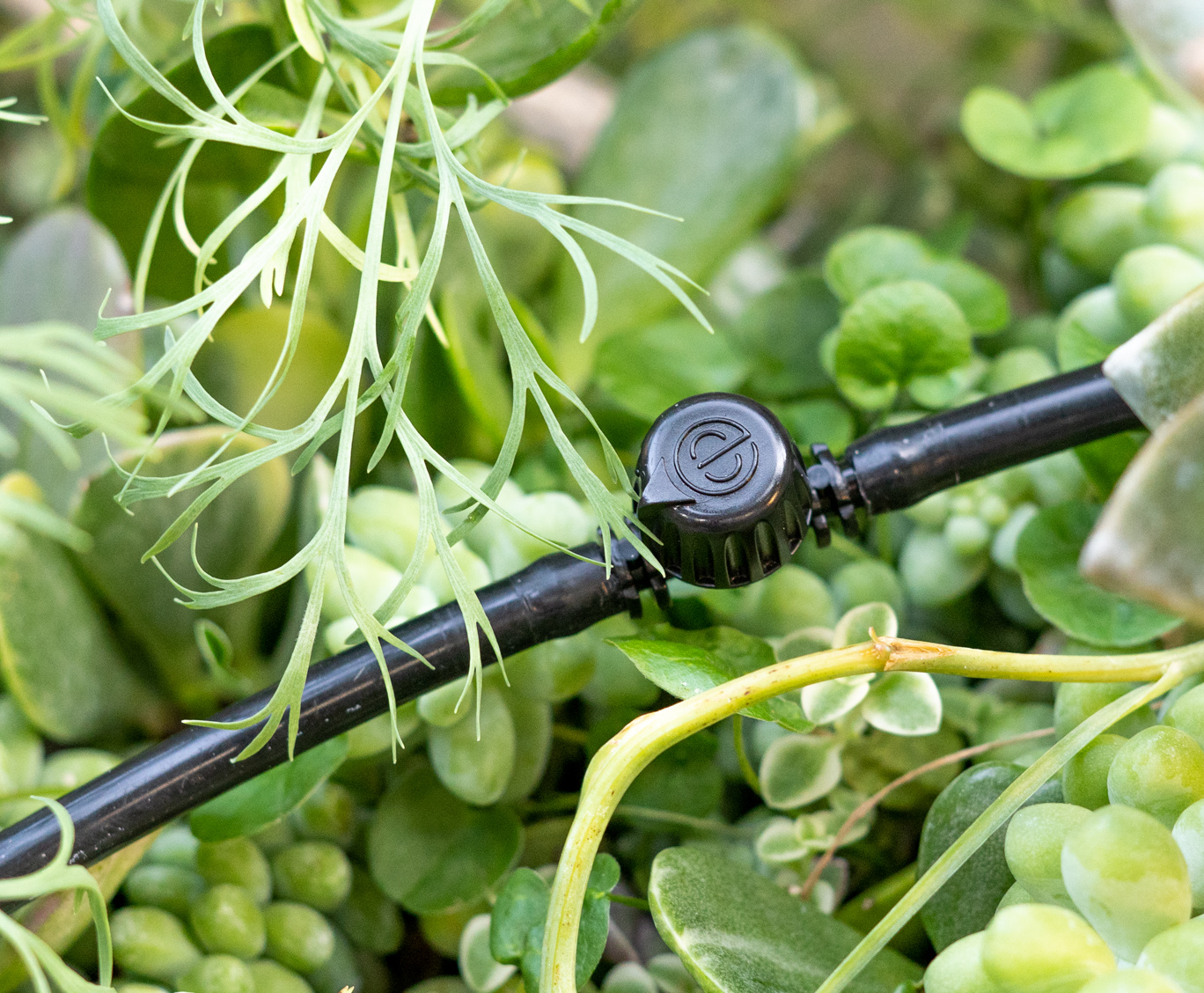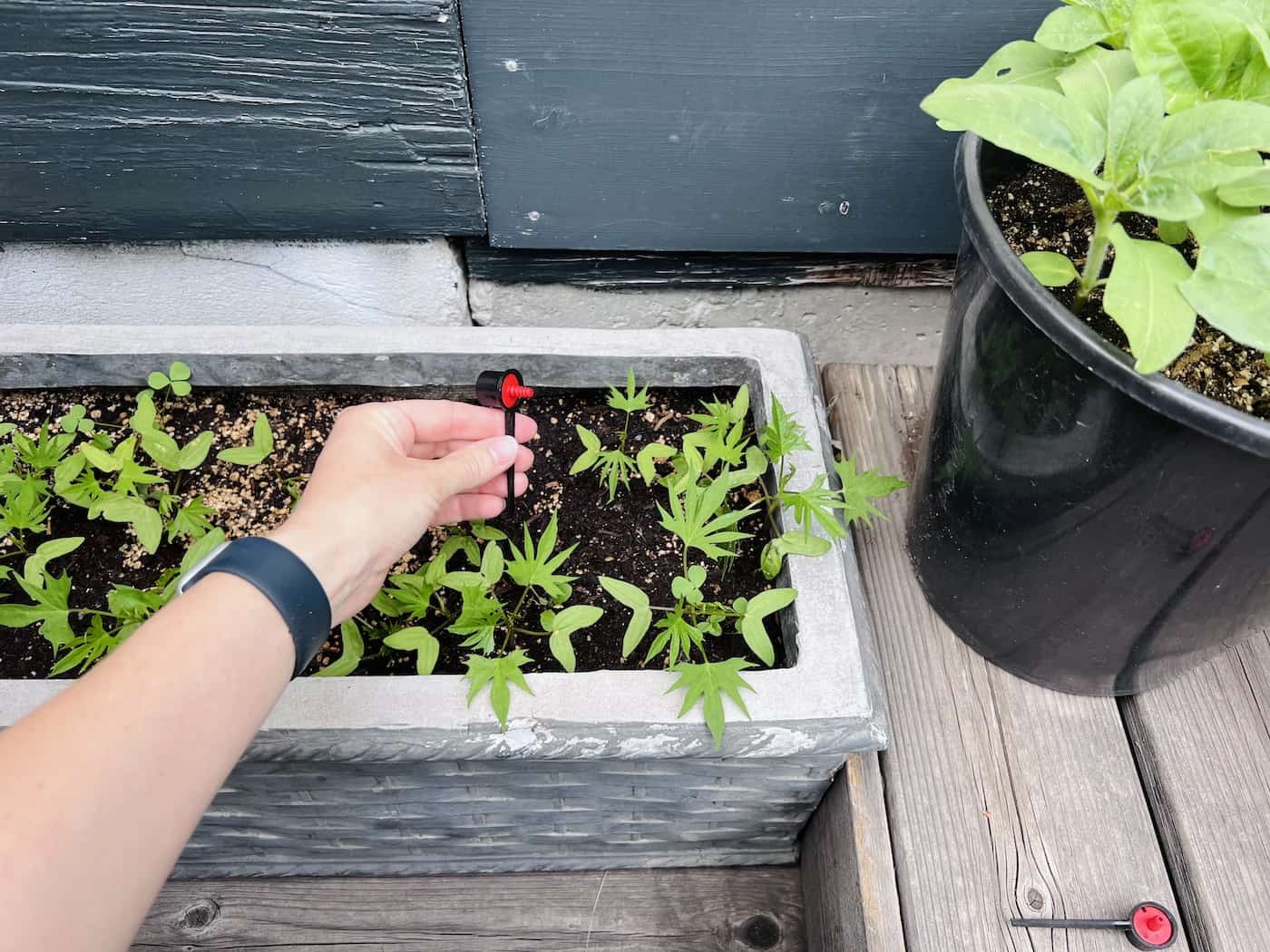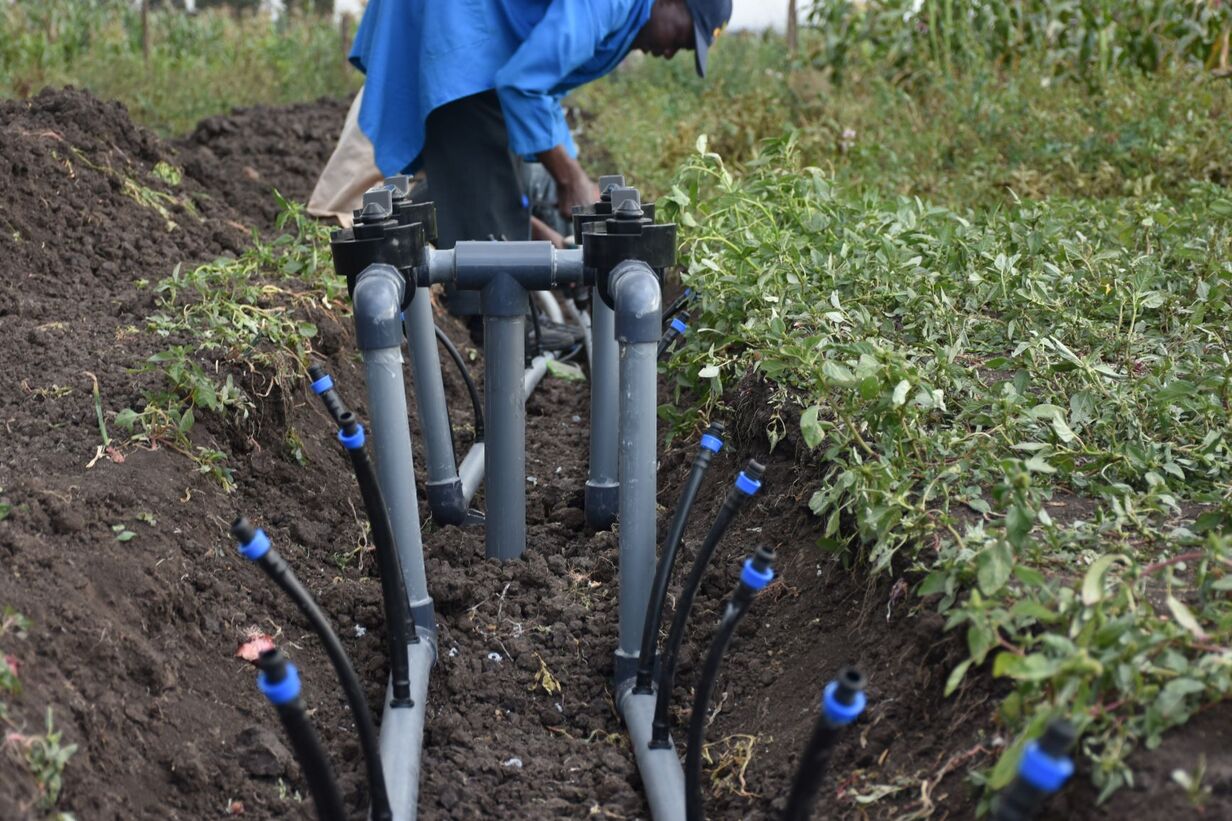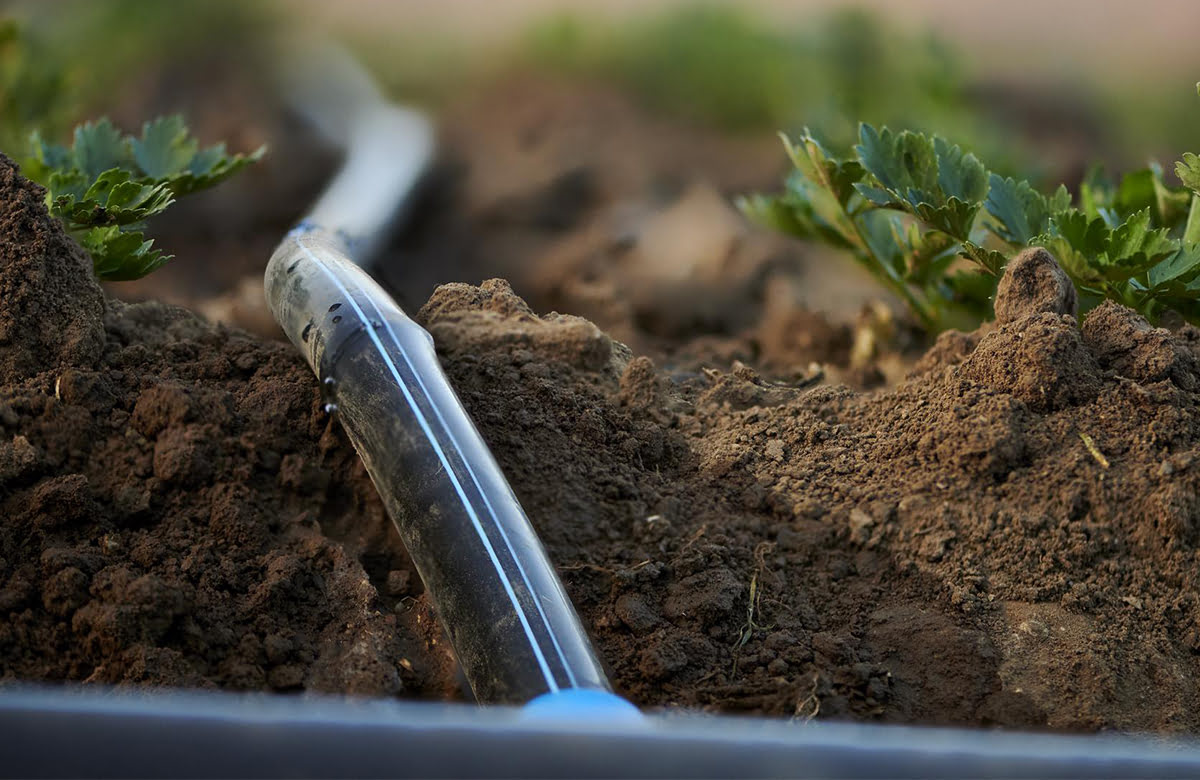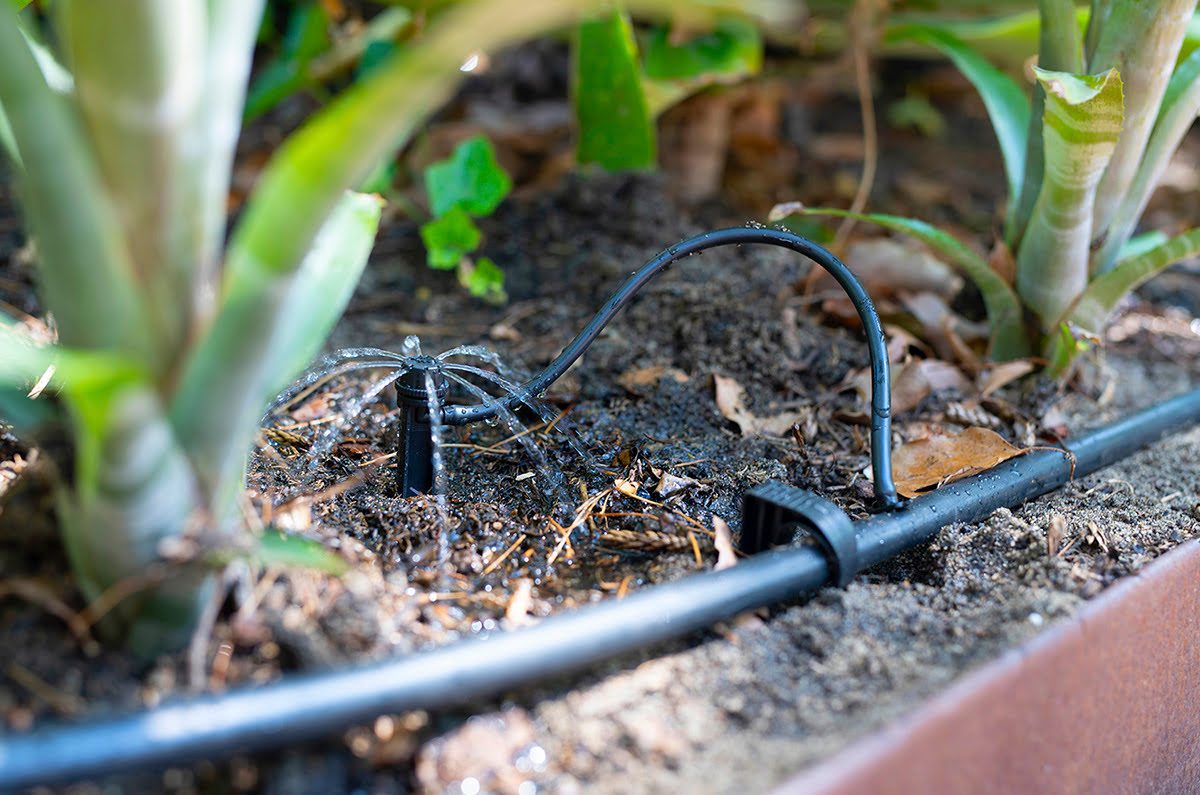Home>Gardening Techniques>Plant Care>How Long To Water Plants With Drip Irrigation In AZ


Plant Care
How Long To Water Plants With Drip Irrigation In AZ
Modified: February 6, 2024
Ensure proper plant care with drip irrigation in AZ by learning how long to water plants for optimal growth. Discover expert tips and techniques for efficient watering.
(Many of the links in this article redirect to a specific reviewed product. Your purchase of these products through affiliate links helps to generate commission for Chicagolandgardening.com, at no extra cost. Learn more)
Table of Contents
- Introduction
- Benefits of Drip Irrigation in Arizona
- Factors Affecting Watering Duration in Drip Irrigation
- Determining Watering Duration for Various Types of Plants
- Watering Schedule for Drip Irrigation in Arizona
- Adjusting Watering Duration for Seasonal Changes
- Troubleshooting Common Issues with Drip Irrigation
- Conclusion
Introduction
When it comes to plant care, proper watering is essential for healthy and thriving plants. In the arid climate of Arizona, where water is a precious resource, it becomes even more crucial to optimize irrigation methods.
Drip irrigation is a highly efficient and effective watering technique for plants in Arizona. This system delivers water directly to the plant’s root zone, minimizing water waste and evaporation. With drip irrigation, water is distributed slowly and evenly, ensuring plants receive adequate moisture without causing soil saturation or runoff.
In this article, we will explore the benefits of using drip irrigation in Arizona and discuss how to determine the appropriate watering duration for different types of plants. We will also provide tips for adjusting the watering schedule based on seasonal changes and offer troubleshooting advice for common issues that may arise with drip irrigation.
Whether you are new to gardening or a seasoned plant enthusiast, understanding the ins and outs of drip irrigation will help you maintain healthy and beautiful plants while conserving water.
Let’s delve into the world of drip irrigation and discover how to optimize watering for plants in the arid Arizona climate.
Benefits of Drip Irrigation in Arizona
Using drip irrigation in Arizona offers various benefits that make it an ideal choice for plant care. Let’s explore these advantages:
- Water Conservation: In Arizona, where water scarcity is a concern, drip irrigation is a water-efficient solution. Unlike traditional sprinkler systems that can lead to significant water loss through evaporation and runoff, drip irrigation delivers water directly to the plant’s root zone. This targeted approach minimizes water waste and ensures that plants receive the precise amount of moisture they need.
- Reduced Weed Growth: Drip irrigation systems supply water only to the plants, keeping the areas between them dry. This helps suppress weed growth as weeds require moisture to thrive. By minimizing weed growth, drip irrigation reduces competition for resources, allowing plants to receive nutrients and water more effectively.
- Prevents Diseases: Overhead watering can increase the risk of plant diseases, as the leaves and foliage remain wet for longer periods, creating an environment conducive to fungal and bacterial growth. With drip irrigation, water is delivered directly to the roots, keeping the foliage dry and minimizing the chances of disease development.
- Improved Plant Health: Drip irrigation promotes healthier plants by providing a more consistent and even water supply. Soil moisture remains balanced, preventing under or overwatering conditions. This control over moisture levels reduces stress on plants, resulting in stronger root growth, better nutrient absorption, and overall improved plant health.
- Easier Maintenance: Drip irrigation systems require less maintenance compared to other watering methods. Once the system is installed, it can be set up with timers or automated controllers to deliver water at specific intervals. This eliminates the need for manual watering, allowing you to save time and effort while ensuring optimal watering for your plants.
By incorporating drip irrigation into your plant care routine, you can conserve water, suppress weed growth, prevent diseases, improve plant health, and simplify maintenance tasks. These benefits make drip irrigation an excellent choice for watering plants in the arid Arizona climate.
Factors Affecting Watering Duration in Drip Irrigation
The duration of watering in a drip irrigation system can vary depending on several factors. Understanding these factors will help you determine the appropriate watering duration for your plants. Let’s explore the key factors that influence watering duration:
- Plant Type: Different plants have varying water requirements. Some plants, like succulents and cacti, thrive in dry conditions and require less frequent watering, while others, such as leafy greens and flowering plants, need more moisture. Consider the specific water needs of the plants in your garden and adjust the watering duration accordingly.
- Stage of Growth: The growth stage of your plants also affects their water requirements. Newly planted or seedling plants may need more frequent watering to establish their roots, while mature plants may require less frequent watering once their root systems are well-developed. Monitor your plants’ growth stages to adjust the watering duration accordingly.
- Soil Type and Moisture Holding Capacity: The soil type in your garden plays a significant role in determining watering duration. Sandy soil tends to drain water quickly, requiring more frequent watering, while clay soil retains moisture for longer periods, allowing for less frequent watering. Understanding your soil’s moisture holding capacity will help you gauge the appropriate watering duration.
- Climate and Weather: The climate and weather conditions in your area impact the amount of water plants need. In Arizona’s hot and arid climate, plants may require more frequent watering, especially during the summer months. Additionally, factors like temperature, wind, and humidity can affect evaporation rates and water loss, influencing the watering duration.
- Plant Size and Density: Larger plants with a dense foliage canopy can create shade and reduce the evaporation rate from the soil. This can impact the watering duration, as shaded areas may require less water compared to areas exposed to direct sunlight. Consider the size and density of your plants when determining the watering duration.
- Irrigation System Efficiency: The efficiency of your drip irrigation system affects watering duration. Factors such as the flow rate of your emitters, the spacing of the drip lines, and the pressure of the system can influence how quickly water is delivered to the plant’s root zone. Ensure that your irrigation system is properly designed and maintained for optimal watering efficiency.
By considering these factors and monitoring your plants’ needs, you can adjust the watering duration in your drip irrigation system to ensure that your plants receive the right amount of moisture for their specific requirements. Customizing the watering duration based on these factors will help promote healthy plant growth and conserve water in your garden.
Determining Watering Duration for Various Types of Plants
Each type of plant has unique water requirements, and determining the appropriate watering duration is crucial for their optimal growth and health. Here are some guidelines to help you determine the watering duration for different types of plants:
- Succulents and Cacti: These desert plants are well-adapted to dry conditions and require infrequent watering. Water them deeply, allowing the water to reach the plant’s root zone, and then allow the soil to dry out completely before watering again. In general, watering them once every 2-4 weeks is sufficient, but always monitor the soil moisture to adjust as needed.
- Leafy Greens and Herbs: Plants like lettuce, spinach, and herbs have higher water requirements. Water these plants more frequently, ensuring that the soil remains consistently moist. Aim for watering once or twice a week, depending on the weather conditions. Adjust the watering duration to accommodate different growth stages and weather patterns.
- Flowering Plants and Shrubs: Flowering plants and shrubs often require regular watering to support their blooming cycle. Water deeply and less frequently, allowing the water to penetrate the root zone. Depending on the plant’s water needs, water them once or twice a week, ensuring the soil dries out slightly between watering sessions.
- Vegetables and Fruits: These plants typically require consistent soil moisture for optimal growth. Water them deeply, ensuring that the root zone receives enough water. Depending on the specific crop and weather conditions, aim to water vegetables and fruits 2-3 times a week, adjusting as needed to maintain even moisture levels.
- Established Trees and Shrubs: Established trees and shrubs have well-developed root systems and can tolerate drier conditions. Water deeply, allowing the water to penetrate the soil up to the root zone. Aim for watering these plants once every 1-2 weeks, ensuring that the soil dries out slightly before the next watering session.
Remember to consider the factors mentioned earlier, such as climate, soil type, and plant size, when determining the watering duration for your plants. It’s important to strike a balance between providing enough moisture for healthy growth and avoiding overwatering, which can lead to root rot and other issues.
Regularly monitor the soil moisture levels and observe your plants’ appearance and behavior to make any necessary adjustments to the watering duration. By tailoring the watering duration to each plant’s specific needs, you can promote vigorous growth and ensure their overall well-being.
Watering Schedule for Drip Irrigation in Arizona
Creating a suitable watering schedule for your drip irrigation system in the arid Arizona climate is essential for maintaining healthy plants. While the specific schedule may vary depending on factors such as plant type, soil, and weather conditions, here are some general guidelines to help you establish an effective watering routine:
- Frequency: In the dry Arizona climate, it is generally recommended to water plants with drip irrigation 2-3 times per week. However, the watering frequency may need to be adjusted based on the factors mentioned earlier, such as plant type and growth stage. Monitor the moisture levels in the soil and adjust the watering schedule accordingly.
- Time of Day: It is generally best to water your plants early in the morning or during the evening to minimize water loss due to evaporation. Avoid watering during the hottest part of the day to prevent the water from evaporating before it has a chance to reach the plants’ roots.
- Watering Duration: The watering duration will depend on factors like plant water requirements, soil type, and drip irrigation system efficiency. As a general rule, aim for a watering duration that allows water to penetrate the root zone to a depth of 6-12 inches. Start by watering for about 30 minutes and observe how well the plants respond. Adjust the duration as needed to maintain adequate moisture levels without causing waterlogged soil.
- Monitoring Soil Moisture: Regularly monitor the moisture levels in the soil to ensure it remains adequately moist. You can use a soil moisture meter or conduct a simple finger test by sticking your finger into the soil. If the top inch or two feels dry, it is time to water. However, be careful not to overwater, as this can lead to root rot and other problems.
- Dry Spells and Seasonal Adjustments: During prolonged dry spells or periods of intense heat, it may be necessary to increase the frequency of watering. Monitor your plants closely during these times and adjust the watering schedule as needed to prevent stress and maintain healthy growth. Likewise, during cooler months or periods of higher rainfall, you may need to reduce the frequency of watering.
Remember that these are general guidelines, and it is essential to customize your watering schedule based on the specific needs of your plants and the conditions in your garden. Regularly observe your plants for signs of underwatering or overwatering, such as wilting or yellowing leaves, and make necessary adjustments to optimize watering.
By establishing a consistent and appropriate watering schedule, you can ensure that your plants receive the necessary moisture for healthy growth, even in the arid Arizona climate.
Adjusting Watering Duration for Seasonal Changes
As the seasons change in Arizona, it is important to adjust the watering duration of your drip irrigation system to accommodate the evolving needs of your plants. Seasonal adjustments ensure that your plants receive the appropriate amount of water during different times of the year. Here are some guidelines to help you make these adjustments:
- Summer: Summers in Arizona are typically hot and dry, which means that plants generally require more frequent watering. Monitor the moisture levels in the soil and increase the watering duration if necessary. Plants may need to be watered more often, especially if there are prolonged periods of intense heat or if your plants are in direct sunlight.
- Spring and Fall: During the transitional seasons of spring and fall, the weather in Arizona can vary. Monitor both the temperature and the moisture levels in the soil to determine the appropriate watering duration. As temperatures become milder, you may need to reduce the watering frequency or duration to prevent overwatering.
- Winter: Winters in Arizona can bring cooler temperatures and occasional frost. During this time, plant growth slows down, and watering requirements decrease. Monitor the moisture levels in the soil and adjust the watering duration accordingly. Be cautious not to overwater during this period, as plants are more susceptible to root diseases when the soil remains consistently damp.
Keep in mind that these are general guidelines, and individual plant needs may differ. Factors such as plant type, growth stage, and microclimates within your garden should also be considered when making seasonal watering adjustments.
Regularly observe your plants for signs of stress or excess moisture, such as wilting, yellowing leaves, or waterlogged soil. This will help you fine-tune your watering duration and ensure that your plants remain healthy throughout the changing seasons.
By being proactive and making appropriate adjustments to your watering duration, you can meet the unique needs of your plants as the seasons change in Arizona and maintain their health and vitality.
Troubleshooting Common Issues with Drip Irrigation
While drip irrigation is an efficient and effective watering method, certain issues can arise that may affect its performance. Here are some common problems you may encounter with drip irrigation and suggestions for troubleshooting:
- Clogged Emitters: Over time, emitters can become clogged with debris or mineral deposits, resulting in reduced water flow or no flow at all. To fix this issue, remove the clogged emitters and clean them by soaking them in a vinegar solution or using a small brush to remove any blockages. Regularly inspect and flush the system to prevent clogging.
- Uneven Water Distribution: If you notice that some plants are receiving more water than others, it may be due to uneven water distribution. This can be caused by a damaged emitter, a faulty pressure regulator, or improper spacing of the drip lines. Check for any damaged or malfunctioning components and adjust the system to ensure even water distribution.
- Leaks: Leaks can occur at connection points, emitters, or the main supply line. Inspect the system for any visible signs of leaks or wet areas. Tighten any loose connections and replace damaged or worn-out components. Regularly checking for leaks and repairing them promptly will help prevent water waste and maintain system efficiency.
- Pressure Issues: Proper water pressure is crucial for the optimal functioning of a drip irrigation system. Low water pressure can lead to insufficient water flow, while high water pressure can cause damage to the emitters and result in water waste. Make sure the system’s pressure regulator is properly adjusted to maintain the recommended pressure level for your specific drip irrigation setup.
- Inadequate Coverage: If you notice dry spots or areas that are not adequately irrigated, it may be due to improper emitter placement or spacing. Adjust the placement of the emitters or add additional ones to ensure full coverage of the area. It is essential to regularly evaluate the system’s coverage and make necessary adjustments to meet the watering needs of your plants.
- Maintenance Neglect: Lack of regular maintenance can contribute to various issues with your drip irrigation system. It is important to regularly inspect the system, clean or replace clogged emitters, check for leaks, and ensure proper functioning of all components. Additionally, flush the system periodically to remove any accumulated debris. Proper maintenance will help prevent problems and ensure the longevity and efficiency of your drip irrigation system.
By addressing these common issues promptly and taking proactive steps to maintain your drip irrigation system, you can ensure reliable and efficient watering for your plants. Regular monitoring, inspection, and timely repairs or adjustments will help you enjoy the full benefits of drip irrigation and keep your plants thriving.
Conclusion
Drip irrigation is an excellent technique for watering plants in the arid climate of Arizona. With its water efficiency and targeted delivery, drip irrigation offers several benefits, including water conservation, reduced weed growth, prevention of diseases, improved plant health, and easier maintenance.
When determining the watering duration for your plants in a drip irrigation system, it is essential to consider factors such as plant type, growth stage, soil type, climate, and system efficiency. By customizing the watering schedule and ensuring adequate moisture levels for your plants, you can promote healthy growth and conserve water in your garden.
Remember to adjust your watering duration for seasonal changes, taking into account the specific needs of your plants during hot summers, transitional seasons, and cooler winters. Regularly monitor the moisture levels and observe your plants for signs of stress or overwatering to make necessary adjustments.
In the event of common issues with drip irrigation, such as clogged emitters, uneven water distribution, leaks, pressure problems, or inadequate coverage, troubleshooting can help resolve these problems and maintain the efficiency of your system. Regular maintenance and inspection are vital to keep your system running smoothly.
By mastering the art of drip irrigation and incorporating these tips into your plant care routine, you can create an optimal environment for your plants to thrive, conserve water, and enjoy the beauty and bounty of a healthy, well-watered garden in the arid Arizona climate.
